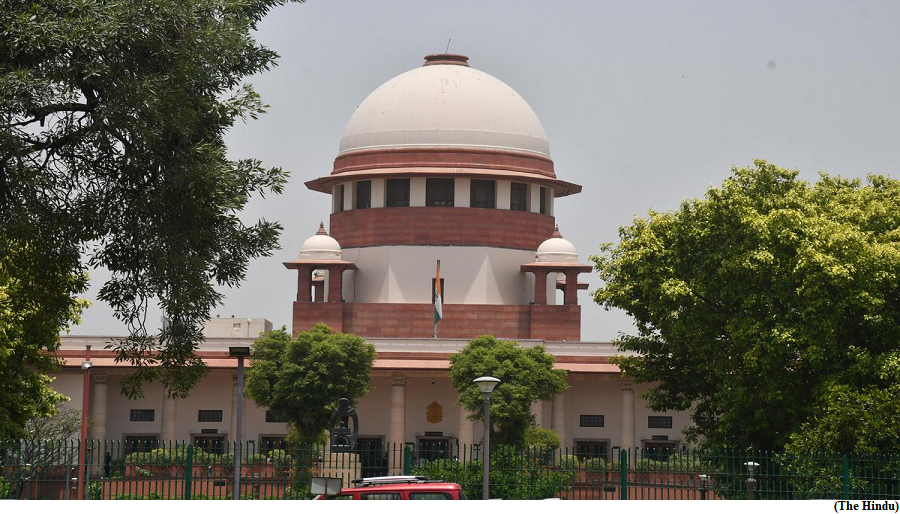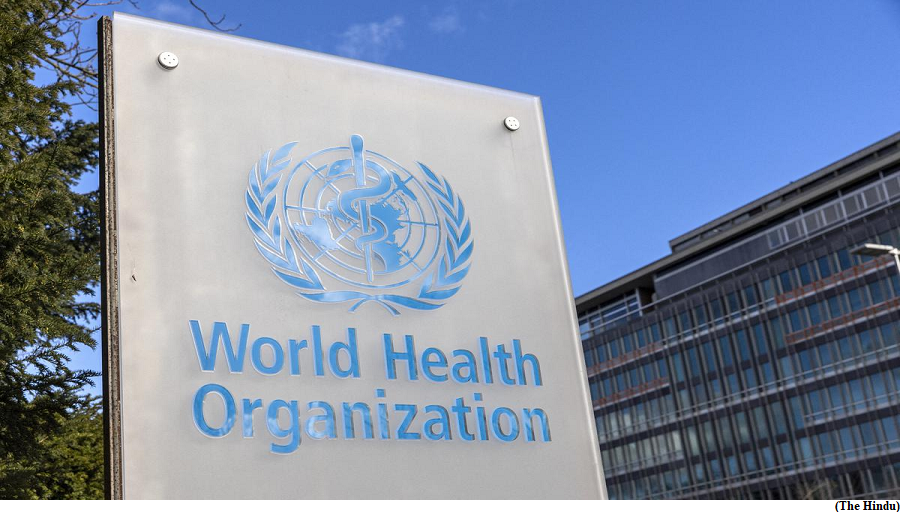Centre seeks review of SC verdict on Delhi govt. powers (GS Paper 2, Judiciary)

Why in news?
- The Centre has sought a review of a Supreme Court verdict upholding the Delhi government’s power to make laws and wield control over Civil Services in the National Capital.
Review plea by Centre:
- The Centre said the judgment by a Constitution Bench headed by Chief Justice of India D.Y. Chandrachud had the effect of declaring Delhi a “full-fledged State” when it is actually a Union Territory.
- The Union government said Delhi has never been elevated to the level of a State. The Centre said the judgment was self-contradictory, terming that Delhi had a sui generis or special status while at the same time treating it as a ‘State’.
- The Centre argued that for a Union Territory, the Parliament is the sole legislative body.
- The judgment, though accepting the superior legislative authority of the Parliament over Delhi, had gone on to recognise extensive legislative and executive powers to the Delhi Council of Ministers and the Legislative Assembly.
- The review plea said the legislative powers are distributed between Parliament and State Legislatures and not between Parliament and Legislative Assemblies of Union Territories.
Contradiction:
- The petition further said the five-judge Bench judgment contradicts a 1997 nine-judge Bench decision of the Supreme Court in New Delhi Municipal Corporation vs State of Punjab, in which it was “clearly held that notwithstanding the 69th Amendment introducing a Legislative Assembly for Delhi, the NCT of Delhi remains a Union Territory”.
- The Centre said Article 309 of the Constitution clearly distinguished between the Centre and State services. The civil services in a Union Territory clearly belonged to the Centre.
- The appointments and transfers are made in the Delhi administration in accordance with the Central recruitment rules approved by the President through Lieutenant-Governor (LG) under Article 309.
How does a review petition get heard in court?
- A judgment of the Supreme Court becomes the law of the land, according to the Constitution. However, the Constitution, under Article 137, gives the Supreme Court the power to review any of its judgments or orders.
- This departure from the Supreme Court’s final authority is entertained under specific, narrow grounds. So, when a review takes place, the law is that it is allowed not to take fresh stock of the case but to correct grave errors that have resulted in the miscarriage of justice
- The court has the power to review its rulings to correct a “patent error” and not “minor mistakes of inconsequential import”.
- In a 1975 ruling, Justice Krishna Iyer said a review can be accepted “only where a glaring omission or patent mistake or like grave error has crept in earlier by judicial fallibility”.
On what grounds can a petitioner seek a review of an SC verdict?
- In a 2013 ruling, the Supreme Court itself laid down three grounds for seeking a review of a verdict it has delivered:
- The discovery of new and important matter or evidence which, after the exercise of due diligence, was not within the knowledge of the petitioner or could not be produced by him;
- Mistake or error apparent on the face of the record;
- Or any other sufficient reason. In subsequent rulings, the court specified that “any sufficient reason” means a reason that is comparable to the other two grounds.
- In another 2013 ruling (Union of India v. Sandur Manganese & Iron Ores Ltd), the court laid down nine principles on when a review is maintainable. A review is by no means an appeal in disguise whereby an erroneous decision is reheard and corrected but lies only for patent error. It added that the mere possibility of two views on the subject cannot be a ground for review.
What happens if a review petition fails?
- As the court of last resort, the Supreme Court’s verdict cannot result in a miscarriage of justice.
- In Roopa Hurra v Ashok Hurra (2002), the court itself evolved the concept of a curative petition, which can be heard after a review is dismissed to prevent abuse of its process.
- A curative petition is also entertained on very narrow grounds like a review petition, and is generally not granted an oral hearing.
WHO’s global network to detect threat from diseases
(GS Paper 2, Health)
Why in news?
- The World Health Organization recently launched a global network to help swiftly detect the threat from infectious diseases, like COVID-19, and share the information to prevent their spread.

Key Highlights:
To achieve its mission, the IPSN encompasses five areas of work:
Communities of practice to solve common challenges:
- At the heart of the IPSN’s work is a set of communities of practice that enable exchange between partners working on pathogen genomics. The first of these is the IPSN Community of Practice on genomics data.
- Its projects and deliverables aim to harmonize data standards and protocols, ensure genomics data tools are fit for purpose, and that data and benefits sharing are enhanced.
Country scale-up accelerator to align efforts and enable South-South exchange:
- The IPSN has established a Country Scale-Up Accelerator (CSUA) to accelerate and amplify the efforts of IPSN members to rapidly increase country capacity for pathogen genomic surveillance.
- The CSUA’s projects and deliverables aim to create a set of capacity-building tools as global goods, and to empower increased South-South bilateral and subregional partnerships for capacity development.
Funding to improve equity and to power IPSN projects:
- To ensure improved coordination and harmonization of donor efforts, the IPSN has established a funders forum, which works with the Secretariat to support IPSN activities and members including a small grants fund.
High-level advocacy and communications to keep genomic surveillance on the agenda:
- With active engagement of countries, partners, regional organizations and WHO, the IPSN keeps pathogen genomic surveillance on the global agenda and ensures strategic buy-in.
Global partners forum for pathogen genomics to bring partners together:
- The annual forum brings together key players from all IPSN entities involved in pathogen genomic surveillance, providing a high-profile stage to build partnerships, introduce innovations, socialize ideas and advocate for political and financial commitments.
Significance:
- WHO hailed the “ambitious” goals of the new network, saying it could “play a vital role in health security”.
New technique welcomes Calcium-41 to radiometric dating
(GS Paper 3, Science and Technology)
Context:
- A new study by researchers at the University of Science and Technology of China (USTC), Hefei shows a way to use calcium-41 the same way carbon-14 has been used in carbon-dating.

Background:
Calcium-41:
- In 1979, scientists suggested using calcium-41, with a half-life of 99,400 years. It is produced when cosmic rays from space smash into calcium atoms in the soil, and is found in the earth’s crust, opening the door to dating fossilised bones and rock. But several problems need to be overcome before it can be used to reliably date objects.
- When an organic entity is alive, its body keeps absorbing and losing carbon-14 atoms. When it dies, this process stops and the extant carbon-14 starts to decay away.
- Using the difference between the relative abundance of these atoms in the body and the number that should have been there, researchers can estimate when the entity died.
- A significant early issue with carbon dating was to detect carbon-14 atoms, which occur once in around 1,012carbon atoms. Calcium-41 is rarer, occurring once in around 1,015calcium atoms.
ATTA:
- In the new study, researchers pitched a technique called atom-trap trace analysis (ATTA) as a solution.
- ATTA is sensitive enough to spot these atoms; specific enough to not confuse them for other similar atoms and fits on a tabletop.
- A sample is vaporised in an oven. The atoms in the vapour are laser-cooled and loaded into a cage made of light and magnetic fields. In an atom, an electron in one orbital can transition to the next if it’s given a specific amount of energy; then it jumps back by releasing that energy.
Electron transition:
- In ATTA, a laser’s frequency is tuned such that it imparts the same energy as required for an electron transition in calcium-41.
- The electrons absorb and release this energy, revealing the presence of their atoms. The researchers reported being able to spot one calcium-41 atom in every 1,016 calcium atoms with 12% precision in seawater.
- ATTA also avoids potassium-41 atoms, which are similar to calcium-41 atoms but lack the same electron transition.
Way Forward:
- The researchers are currently exploring an earth-science application. In warmer climate, glaciers retreat and allow rock below to accumulate calcium-41. In colder climate, glaciers advance and block the calcium-41 from reaching the rock.
- This way, scientists hope to use ATTA to study how long some rock has been covered by ice.




